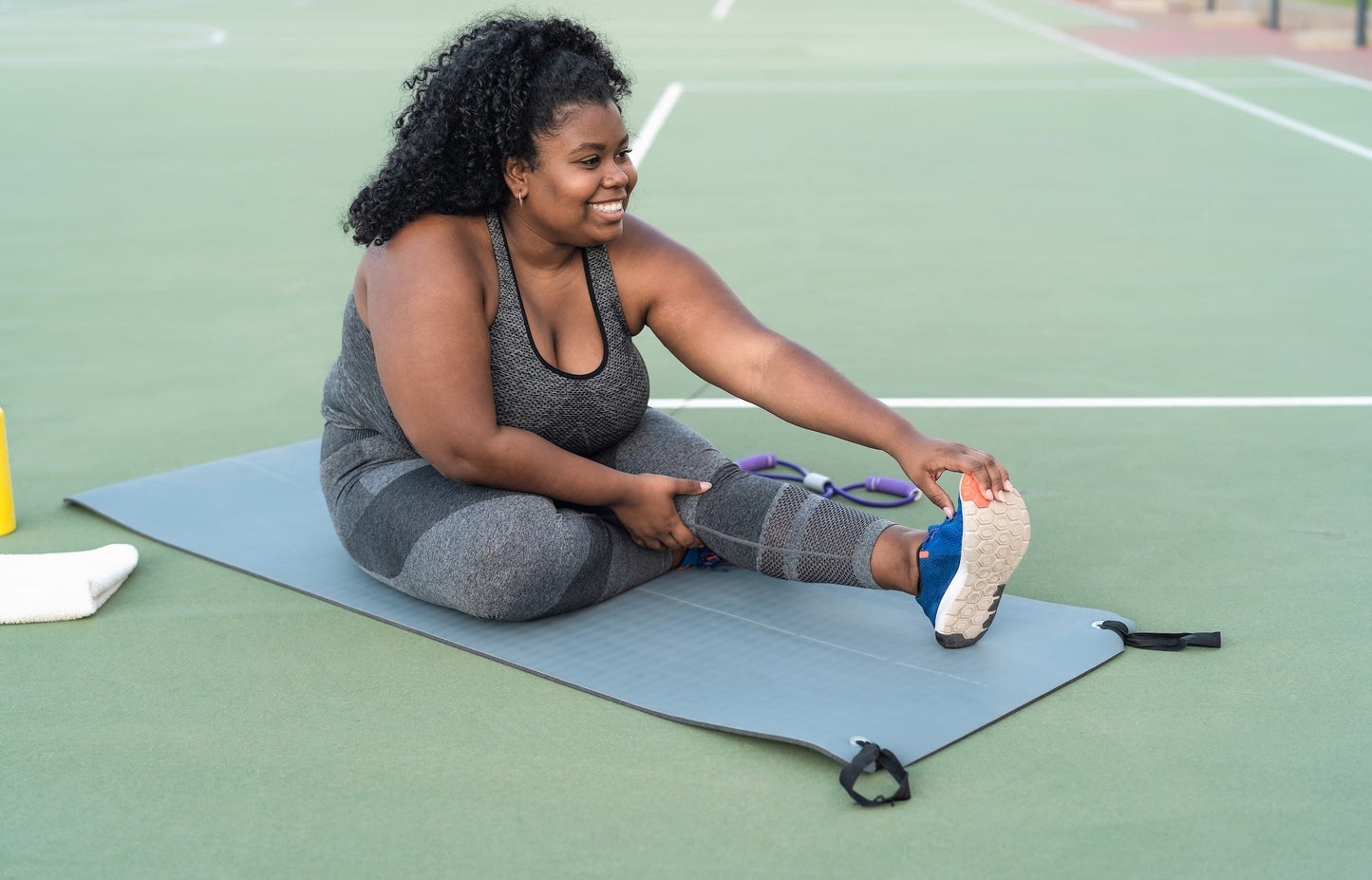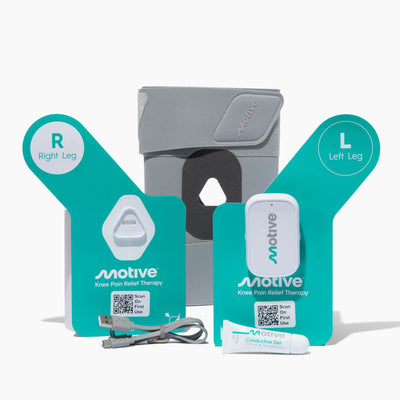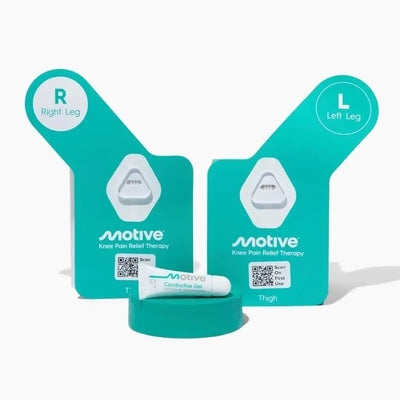
Does everyday life feel like an insurmountable challenge because of your knee pain? You’re not alone. Millions of Americans suffer from knee arthritis and are looking for solutions that don’t involve going under the knife. While knee replacement surgery is a common treatment, many wonder, “Are there ways to manage knee arthritis without surgery?”
The answer is yes. For many people with knee osteoarthritis and other forms of knee arthritis, non-surgical approaches can improve quality of life, relieve pain, and increase mobility.
According to the Centers for Disease Control and Prevention, over 32.5 million adults in the US are affected by osteoarthritis, with the knee being one of the most commonly affected joints.
In this article, we will review evidence-based non-surgical treatments for knee arthritis, from lifestyle changes to innovative therapies that can help you regain control of your life and activities.
If you’re just starting to develop knee arthritis or have been living with this debilitating condition for years, these may be the answers you’ve been looking for.
What is Knee Arthritis?
Before we get into treatment options, it’s important we understand how arthritis impacts the knees.
Knee arthritis, particularly osteoarthritis, is often described as “wear and tear” on the joint. While osteoarthritis is the most common type of arthritis affecting the knee joint, other forms include rheumatoid arthritis and inflammatory arthritis.
Osteoarthritis involves the breakdown of articular cartilage, which is the smooth, protective tissue covering the ends of bones where they meet to form joints. As this cartilage wears away, it leads to joint pain, stiffness, swelling, and reduced mobility.
The thigh bone (femur) and shin bone (tibia) may start to rub against each other, causing friction, inflammation, and further cartilage loss.
The success of non-surgical treatments depends on several factors, including:
-
The severity of arthritis
-
Individual health conditions
-
Age
-
Weight
-
Commitment to lifestyle changes
For many people with mild to moderate knee osteoarthritis, non-surgical approaches can provide significant relief and delay or even avoid the need for joint replacement surgery.
Non-Surgical Treatment Strategies for Knee Arthritis
Managing knee arthritis without surgery requires a multi-faceted approach. Let’s look at the various non-surgical knee replacement alternatives that have shown promise in treating knee arthritis.
Lifestyle Modifications
Simple changes to your daily habits can make a big difference in knee arthritis pain.
-
Weight Management: Excess weight puts extra stress on your knee joints. Research shows that for every pound of weight lost, four pounds of pressure is removed from the knee joint. Losing weight through a healthy diet and exercise can reduce pain and improve knee function. Even a 5-10% weight loss can make a big difference.
-
Activity Modification: Changing how you move and what you do can help your knees. Try switching from high-impact activities like running to low-impact activities like swimming, cycling, or using an elliptical. These activities will keep you fit while putting less stress on the affected joint.
-
Assistive Tools: Supportive devices can give you extra mobility. Canes, properly fitted braces, and shock-absorbing shoe inserts can redistribute weight and take pressure off your painful knee. These solutions only provide temporary pain relief, not long-term healing, but they can be valuable tools in your daily pain management plan.
Physical Therapy and Exercise
Movement is medicine when it comes to knee arthritis. Working with a physical therapist can be life-changing for many patients.
-
Strengthening Exercises: Building the muscles that support your knee—particularly the quadriceps (front of thigh) and hamstrings (back of thigh)—is key to knee stability. Quadriceps strengthening exercises have been shown to reduce pain and improve physical function in people with knee osteoarthritis. When muscles are stronger, they can absorb shock and reduce pressure on the joint itself.
-
Flexibility and Range of Motion Exercises: Regular stretching helps maintain and improve joint mobility. Gentle stretching of the muscles around your knee can reduce stiffness and improve your mobility. Even simple exercises done daily can prevent the progressive loss of motion that often comes with knee arthritis.
-
Low-Impact Aerobic Exercise: Regular aerobic activity is beneficial for overall health and is especially suitable for people with arthritic joints. Walking, swimming, and stationary cycling improve circulation to the joint, reduce inflammation, and help with weight management—all while being gentle on your knees. The Arthritis Foundation recommends at least 150 minutes of moderate intensity, low-impact exercise per week for people with arthritis.
Pain Management Techniques
Various medications and treatments can help manage pain and inflammation.
-
Over-the-counter medications: Nonsteroidal anti-inflammatory drugs (NSAIDs), such as ibuprofen and naproxen, are pain relievers that can help reduce inflammation and pain. Acetaminophen (Tylenol) can help with pain but doesn’t address inflammation. Always consult with your doctor before starting any medication regimen, especially if you have other health conditions.
-
Prescription Medications: If over-the-counter options don’t work, your doctor may prescribe stronger anti-inflammatory drugs, NSAIDs, or other pain medications. These should be used sparingly and under medical supervision due to side effects, especially with long-term use.
-
Topical Treatments: Creams, gels, and patches with ingredients like menthol, capsaicin, or NSAIDs can provide localized pain relief without the systemic effects of oral medications. These can be helpful for mild to moderate knee pain.
-
Injections: Several types of steroid injections may help with knee arthritis:
-
Corticosteroid injections reduce inflammation and provide short-term pain relief, usually for several weeks to months.
-
Hyaluronic acid injections supplement the natural joint fluid and can improve lubrication and shock absorption, potentially up to 6 months.
-
Platelet-rich plasma (PRP) uses concentrations of your own blood’s healing components to potentially stimulate repair and reduce inflammation.
While these injections may provide temporary relief, they are not permanent solutions and may need to be repeated. Results also vary greatly among individuals.
Complementary and Alternative Therapies
Many people find additional relief through complementary approaches and other treatments, although the scientific evidence for these methods varies.
Acupuncture has shown promise for some patients with knee osteoarthritis. A randomized controlled trial published found that acupuncture improved function and reduced pain compared to sham treatment or standard care alone.
Massage therapy can also help reduce muscle tension around the knee, potentially improving range of motion and decreasing pain. Gentle yoga and tai chi improve balance, flexibility, and muscle strength, while promoting relaxation and stress reduction—all of which is beneficial for arthritis management.
Finally, dietary supplements like glucosamine and chondroitin have mixed evidence but may help some people. If you're taking other medications, always discuss supplement use with your healthcare provider.
The Role of Muscle Support in Knee Arthritis Management
Strong muscles act as shock absorbers and stabilizers for your knees. When the muscles around your knee joint are weak, more stress is placed directly on the joint surfaces and cartilage, potentially accelerating wear and tear.
Research consistently shows that strengthening the muscles around the knee—especially the quadriceps—is one of the most effective non-surgical interventions for knee osteoarthritis. Strong muscles improve joint stability, biomechanics, and can reduce pain.
Motive Knee offers an FDA-cleared treatment that targets one of the root causes of knee pain—muscle weakness—by strengthening the muscles around the joint. This innovative approach uses electrical stimulation to strengthen muscles that may be difficult to target through exercise alone, especially for those who already experience pain when they move.
By rebuilding and strengthening these critical muscles, Motive therapy can be part of a comprehensive treatment plan for knee arthritis that helps you avoid surgery.
Over 20,000 people have had successful results with this physician-recommended solution. You can address knee pain from the comfort of your home, guided by a user-friendly app that personalizes your therapy experience.
Creating a Non-Surgical Management Plan
Everyone’s journey with knee arthritis is different, and what works for one person may not work for another. To create an effective plan, you need:
- Professional Guidance: Work with healthcare providers, your primary doctor, an orthopedic surgeon or orthopaedic surgeon (for evaluation, not necessarily surgery), and a physical therapist who can create exercises for you.
- Personalization: Your plan should take into account your specific symptoms and risk factors, the severity of your condition, level of physical activity, other health issues, age, body weight, and your lifestyle goals.
- Combination Approach: The best non-surgical arthritis management plan is a combination of multiple approaches: exercise, weight loss, pain management, and possibly assistive devices or specialized therapies like Motive.
- Consistency and Patience: Managing knee arthritis is a process that requires commitment. Improvement is gradual, not overnight.
- Regular Reassessment: As your condition changes over time, your treatment plan may need to be adjusted. Regular check-ins with your healthcare provider will ensure you’re using the right strategies.
Take the First Step Toward Non-Surgical Knee Pain Relief
You don’t have to live with knee arthritis and pain or have knee replacement surgery. From lifestyle changes and physical therapy to innovative muscle strengthening solutions like Motive therapy, there are many options to relieve the symptoms of knee arthritis without surgery.
You can improve your knee function and quality of life by taking a proactive approach to strengthening the muscles around your knee, managing your weight, exercising properly, and using targeted therapies.
Many people with knee osteoarthritis find that combining these approaches gives them relief, which means arthroscopic surgery is not necessary on one or both knees, or can be delayed.
Remember, early intervention is key. If you experience pain or have been diagnosed with knee arthritis, don’t wait until your knee arthritis symptoms become severe before trying non-surgical treatments.
Visit Motive to learn more about how our FDA-cleared therapy can be part of your overall knee pain management plan and help you avoid or delay more invasive procedures.
Taking control of your knee health today could mean a more active tomorrow, and lead to treating your knee arthritis without surgery.





